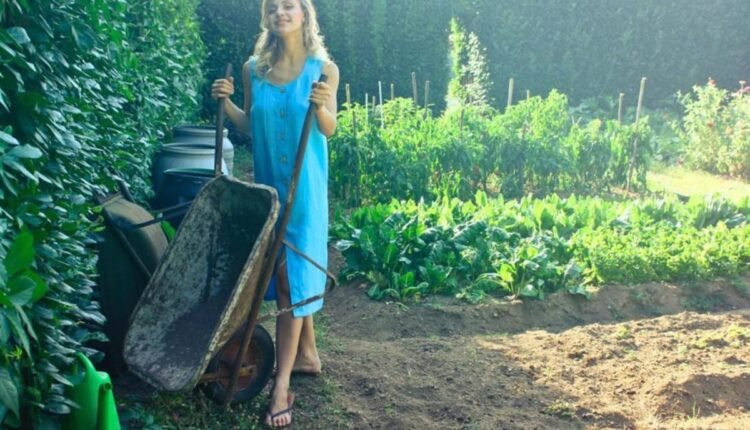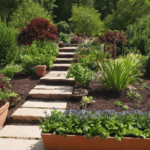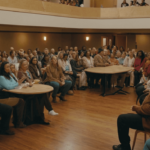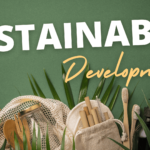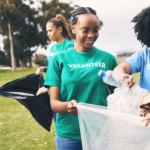Sustainable Fashion 101: How to Build a Conscious Wardrobe You’ll Love
Introduction: More Than Just Clothes—A Movement
Every morning, we stand before our closets making a choice. But have you ever stopped to think about the story behind each garment? The hands that made it, the resources that created it, the journey it took to reach you? At B-dreams, we believe fashion should be a source of joy, not guilt—a way to express yourself while respecting the planet and its people.
Sustainable fashion isn’t about perfection; it’s about progress. It’s about making better choices, one garment at a time. Whether you’re a fashion enthusiast or someone who simply wants to dress responsibly, this guide will help you navigate the world of conscious fashion with confidence and style.
Chapter 1: Understanding Fast Fashion’s True Cost
The Environmental Impact
Fast fashion comes with a hidden price tag that extends far beyond what we pay at the register. The industry is responsible for approximately 10% of global carbon emissions—more than all international flights and maritime shipping combined. Every second, the equivalent of one garbage truck of textiles is landfilled or burned. The dyeing process for fabrics pollutes rivers with toxic chemicals, affecting communities and ecosystems downstream.
The Human Cost
Behind those bargain prices are real people, often working in unsafe conditions for unfair wages. The 2013 Rana Plaza collapse in Bangladesh, which killed over 1,100 garment workers, exposed the devastating human cost of our demand for cheap, quick fashion. While major tragedies make headlines, the daily struggles of garment workers—from wage theft to exposure to harmful chemicals—often go unnoticed.
The Quality Compromise
Fast fashion garments are designed to be disposable. The average piece of clothing is worn only seven times before being discarded. Thin fabrics, poor stitching, and cheap materials mean these items lose their shape, color, and appeal quickly, fueling a cycle of continuous consumption and waste.
Chapter 2: The Foundations of Sustainable Fashion
Slow Fashion: Quality Over Quantity
Slow fashion is the antidote to fast fashion. It emphasizes quality craftsmanship, timeless designs, and garments made to last. Instead of chasing every trend, slow fashion encourages building a curated wardrobe of pieces you truly love and will wear for years. It’s about changing our relationship with clothing from disposable to valuable.
Ethical Production: People Matter
Ethical fashion ensures fair wages, safe working conditions, and respect for workers’ rights throughout the supply chain. This means transparency from the cotton field to the clothing rack. Ethical brands often provide living wage certifications and openly share information about their manufacturing processes.
Circular Fashion: Closing the Loop
Circular fashion aims to eliminate waste by keeping materials in use. This includes designing durable clothing, using recycled materials, and creating systems for clothing repair, resale, and recycling. It’s a shift from the traditional “take-make-waste” model to a regenerative approach.
Chapter 3: Building Your Sustainable Wardrobe Step by Step
Step 1: The Great Closet Audit
Begin your sustainable fashion journey by assessing what you already own. Empty your closet completely and categorize each item:
- Love and wear regularly
- Sentimental items (keep separately)
- Maybe pile (revisit in one month)
- Donate/swap/sell pile
- Repair pile
- Recycle pile (for unwearable items)
This process helps you understand your personal style, identify gaps in your wardrobe, and appreciate what you already have.
Step 2: Learn to Read Labels Like an Expert
Understanding fabric composition is crucial for making sustainable choices:
Eco-Friendly Fabrics:
- Organic cotton: Grown without synthetic pesticides
- Linen: Made from flax, requires little water
- Hemp: Fast-growing, doesn’t require pesticides
- Tencel/Lyocell: Made from sustainably sourced wood pulp
- Recycled polyester: Made from plastic bottles
Fabrics to Avoid:
- Conventional cotton: Water and pesticide-intensive
- Virgin polyester: Petroleum-based, sheds microplastics
- Rayon/Viscose: Often linked to deforestation
Step 3: The 30-Wears Test
Before any new purchase, ask yourself: “Will I wear this at least 30 times?” This simple question helps break the impulse buying habit and ensures you only bring home items you’ll truly value and use.
Step 4: Master the Art of Outfit Repeating
Normalize wearing clothes multiple times! Create a “uniform” of go-to outfits that make you feel confident. Mix and match core pieces to create new looks without new purchases.
Chapter 4: Sustainable Shopping Strategies
The Secondhand First Rule
Make thrifting your default shopping method. The most sustainable garment is one that already exists. Explore:
- Local thrift stores and charity shops
- Online platforms like Depop, ThredUp, and Vestiaire Collective
- Clothing swaps with friends
- Vintage boutiques for unique finds
Research Before You Buy
When purchasing new, invest time in research:
- Check brand certifications (Fair Trade, GOTS, B Corp)
- Read brand transparency reports
- Look for information about factory conditions
- Support small, local designers when possible
The Cost Per Wear Calculation
Shift your thinking from “cost per item” to “cost per wear.” A $200 coat worn 100 times costs $2 per wear, while a $50 coat worn 5 times costs $10 per wear. Quality investments often save money in the long run.
Chapter 5: Caring for Your Clothes to Make Them Last
Washing Wisdom
- Wash less frequently: Spot clean when possible
- Use cold water: Saves energy and preserves colors
- Choose eco-friendly detergents: Free from harsh chemicals
- Air dry when possible: Extends fabric life
- Use a microplastic filter: For synthetic fabrics
Repair and Revive
Basic sewing skills can extend your clothes’ lifespan dramatically:
- Learn to sew buttons and fix seams
- Patch jeans creatively
- Darn socks and sweaters
- Find a good local tailor for more complex repairs
Proper Storage Solutions
- Use wooden hangers for heavy items
- Fold knits to prevent stretching
- Store out-of-season clothes properly
- Use natural moth repellents like cedar
Chapter 6: Navigating Greenwashing in Fashion
Spotting Empty Sustainability Claims
Watch for these red flags:
- Vague terms like “eco-friendly” or “green” without specifics
- One sustainable collection while most practices remain unsustainable
- Focusing on small initiatives while ignoring major impacts
- Lack of transparency about supply chain
Trustworthy Certifications to Look For
- Global Organic Textile Standard (GOTS): Organic fibers and ethical production
- Fair Trade Certified: Ensures fair wages and conditions
- B Corp: Meets high standards of social and environmental performance
- OEKO-TEX: Tests for harmful substances
Chapter 7: Building a Capsule Wardrobe
The Core Principles
A capsule wardrobe consists of versatile, mix-and-match pieces that you love wearing. Start with:
- 3-4 bottoms (jeans, trousers, skirts)
- 5-7 tops (tees, blouses, shirts)
- 2-3 dresses (if you wear them)
- 2 layers (jackets, cardigans)
- Shoes for different occasions
Color Coordination
Choose a cohesive color palette of 3-4 neutral colors plus 1-2 accent colors. This ensures everything works together, making getting dressed effortless.
The One-In-One-Out Rule
Maintain your capsule by removing one item for every new item you add. This prevents closet creep and encourages mindful acquisitions.
Chapter 8: Beyond the Wardrobe—Sustainable Style Ecosystem
Eco-Friendly Laundry Alternatives
- Soap nuts: Natural cleaning berries
- Wool dryer balls: Reduce drying time
- DIY stain removers: Baking soda and vinegar solutions
- Line drying: The ultimate eco-option
Sustainable Accessories
Extend your conscious approach to:
- Jewelry: Choose vintage or ethically made pieces
- Bags: Look for vegan leather alternatives or secondhand
- Shoes: Support sustainable shoe brands
- Underwear: Explore organic cotton options
Chapter 9: Your 30-Day Sustainable Fashion Challenge
Week 1: Awareness & Assessment
- Day 1-3: Conduct closet audit
- Day 4-7: Research sustainable brands
- Weekend: Learn basic clothing repair
Week 2: Mindful Maintenance
- Day 8-14: Implement eco-laundry practices
- Create outfit combinations from existing wardrobe
- Mend 3 items from repair pile
Week 3: Conscious Consumption
- Visit local thrift stores
- Organize clothing swap with friends
- Research one ethical brand thoroughly
Week 4: Integration & Planning
- Develop personal style philosophy
- Plan next season’s needs
- Share your journey with others
Conclusion: Your Style, Your Values, Your Impact
Building a sustainable wardrobe is a journey of small, consistent steps. It’s about developing a deeper appreciation for what we wear and understanding the stories behind our clothes. Every conscious choice—whether it’s repairing a favorite pair of jeans, choosing secondhand, or supporting an ethical brand—contributes to a larger movement toward a more equitable and sustainable fashion industry.
Remember that progress, not perfection, is the goal. Some days you’ll make perfectly sustainable choices; other days, you might need to compromise. What matters is maintaining awareness and continuing to move forward.
At B-dreams, we believe your wardrobe should reflect not just your personal style, but your values too. Your fashion choices have power—the power to uplift communities, protect environments, and create a world where beauty and ethics coexist. Welcome to the conscious fashion revolution—we’re thrilled to have you with us.

